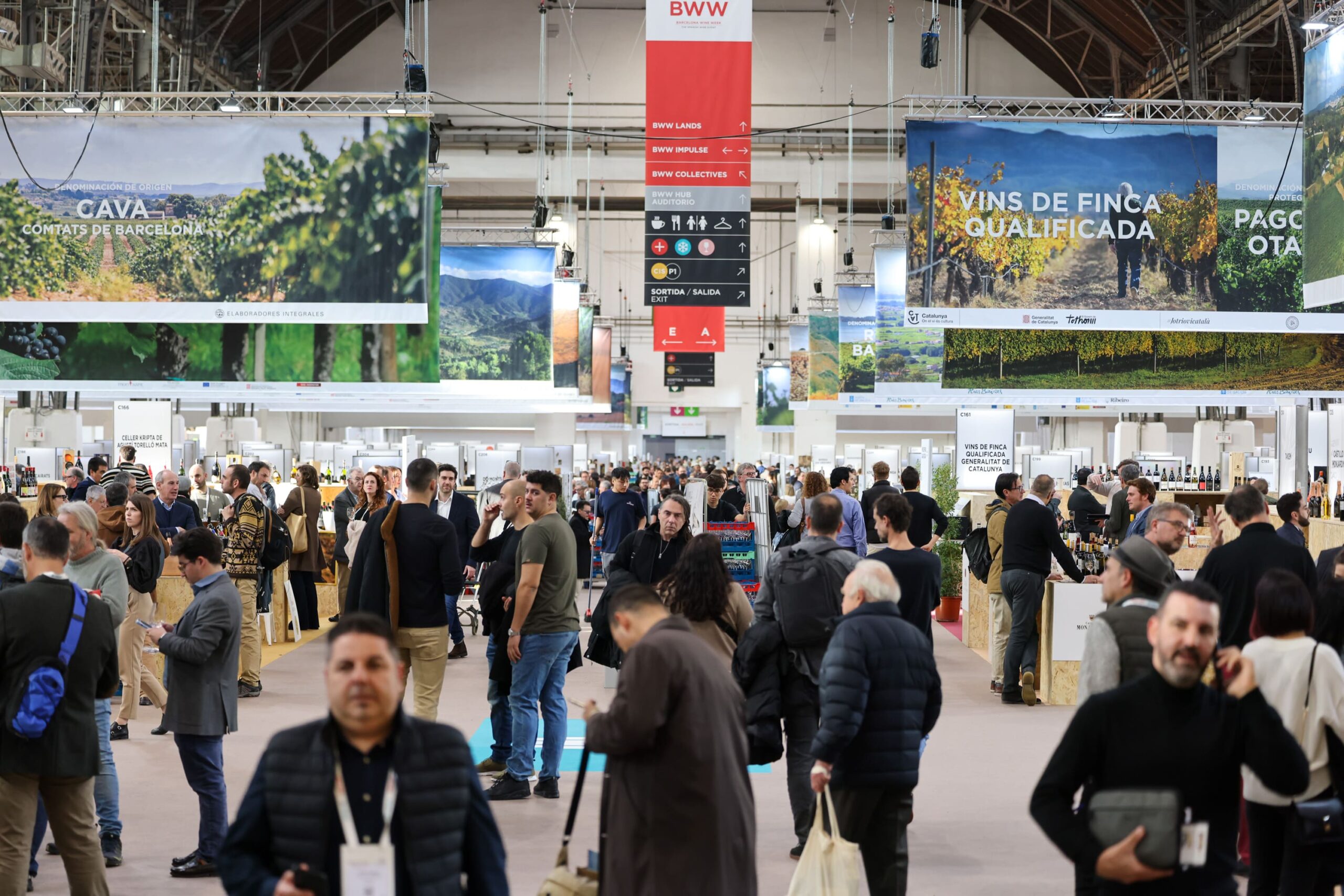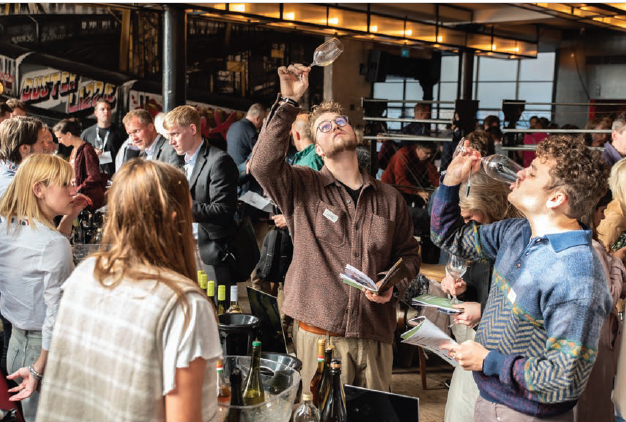Which grape varieties are best for Douro still wines?
Though best known for its Port, Quinta do Noval is increasing its emphasis on its still wines. At a recent London tasting, Christian Seely, managing director of parent company AXA Millésimes, shared his views on which grape varieties are most suitable for these styles.

Celebrated for its fortified wines, particularly for the fact that it has declared a vintage for its Port every year since 2011, Quinta do Noval’s dry wines are also receiving attention.
Whites
“I do think that among the exciting things happening in the Douro, the emergence of very high quality dry white wines is certainly among the most exciting,” Seely explained. db has previously covered how this style, so unlike what the region is famous for, is quietly gaining traction.
“I think you can make very fun mono-varietal white wines, but I tend to find the blends more interesting,” he argued.
For Quinta do Noval, the key white grapes are Viosinho and Gouveio. It was at Quinta da Romaneira, of which Seely is also managing director, that it was discovered that whereas the Gouveio responds well to stainless steel, Viosinho takes well to barrel fermentation, which is precisely what is done for the Cedro do Noval Vinho Branco, which was first produced in 2019.
While the blend composition of Cedro do Noval Vinho Branco varies from vintage to vintage, depending on which suppliers the fruit is sourced from (for example, Fernão Pires is present in the 2022, but not the 2021), Seely disclosed that there is a “significant” difference between the money growers make on grapes for these whites, and the comparatively little they make on fruit destined for White Port, though he would not disclose exact sums.
He did share that some Boal, better known outside of the Douro as Sémillon, has been planted at Quinta do Romaneira. Seely’s familiarity with the variety stems from his work with Sauternes producer Château Suduiraut.
He also argued that the one local white variety that is suited to lower altitude planting due to its ability to retain acidity is Rabigato (a small component of the Cedro do Noval Vinho Branco blend), and that most others need to be planted at least 400 metres above sea level.
Seely noted that he was “very optimistic” about the future of the Douro white wine category, and shared that production of the Cedro do Noval Vinho Branco and Quinta do Noval Reserva Vinho Branco (both Douro DOC) will be increased. Both have proven to be a hit among visitors to the historic Port producer: “I’ve started serving fish at Quinta do Noval, before it was just meat, like goat – now we have lunches where we just serve white wines.”
Another cause for optimism might be that while, according to Seely, climate change is causing hotter Septembers and Octobers in the Douro, the whites tend to be harvested in August, so freshness should be unaffected.
To read about more white grape varieties to watch out for in the Douro, click here.
Reds
While the still whites are a success story in the making, it might be argued that still Douro reds, given the abundance of black variety vines planted for Port, are already there.
Just under 45% of Quinta do Noval’s vineyard area is devoted to Touriga Nacional, “the noblest and the finest of the Douro varieties” and a key player in Port production, though he noted: “In the Douro, we don’t think of Touriga Nacional as one of the varieties best adapted to heat and drought.”
By contrast, Touriga Francesa normally copes well with heat stress, though it did not during the very hot 2020 growing season, hence why it was left out of the Quinta do Noval Reserva blend that vintage.
Partner Content
Through his work with Pauillac’s Château Pichon Baron and Château Pibran, Seely said that some other Bordeaux producers have expressed an interest in Touriga Nacional in particular as the climate warms. The grape was approved for use in Bordeaux alongside five others in 2021.
Asked whether he was considering playing with any Portuguese varieties at Pichon Baron or Pibran, Seely simply replied: “No…there it’s all about grand Cabernet Sauvignon.”
However, when planted in the Douro, Seely suggested that Cabernet Sauvignon tends to be “vulgar and not at all like a Douro grape”. He expressed a more positive opinion of Douro Petit Verdot, but claimed that winemakers need to tread lightly when it comes to extraction, otherwise the late-ripening variety “can be a bit of a monster”.
The international black variety that Seely seemed especially enthused by was Syrah: “It adapts extremely well to the Douro, it has a chameleon-like character.”
In the case of the 2021 Cedro do Noval Vinho Tinto, 20% of the blend is Syrah (25% for the 2020), but because of this, the wines are labelled as Vinho Regional Duriense: “If we didn’t put the Syrah in, it could be a Douro DOC – but we think it’s better with the Syrah in, so it’s not Douro DOC.”
Seely also suggested that, particularly in the case of a hot vintage like 2020, the importance of the field blend component (40% of the 2020 Quinta do Noval Reserva, as opposed to 25% of the 2019) of a still red should not be underestimated, as “inevitably” there will be under-ripe, more acidic grapes in the field blend.
Indeed, field blending is one crucial aspect of Quinta do Noval’s Terroir Series, including in the newly-released 2020 Vinhas do Passadouro, a field blend of more than 20 varieties harvested from 90-year-old vines from a 0.93 hectare parcel on the left bank of the river Pinhão. Just 1,115 bottles, 60 magnums and 30 double magnums were produced.
Despite the UK’s historic connection to Port, Seely suggested that uptake for these unfortified wines on these shores has been slow: “I don’t know why the top Douro reds haven’t gripped UK consumers’ minds in the way I thought they would…My naive assumption when we made the first reds in 2004 was that British consumers have known the Douro for two centuries!”
At present, Portugal, Brazil and the US are the major markets for Quinta do Noval’s still wines.
Seely was among the signatories of The Douro Deserves Better, an open letter published in Publico and Jornal de Noticias, Portugal’s two leading newspapers, in July, that called for a reform to the almost century-old beneficio system. According to the letter, which was supported by the Symingtons, “the Douro is not sustainable” under the current system, which has not accounted for falling Port volumes and rising Douro DOC sales.
To read about more black grape varieties to watch out for in the Douro, click here.
Related reading:
A question of balance: Port makers branch out into table wines
Harvest of ‘ups and downs’ in the Douro
Related news
All the medallists from The Global Fortified Masters 2025
‘It’ll be a shrinking category until it’s rediscovered’: predicting Port’s future




